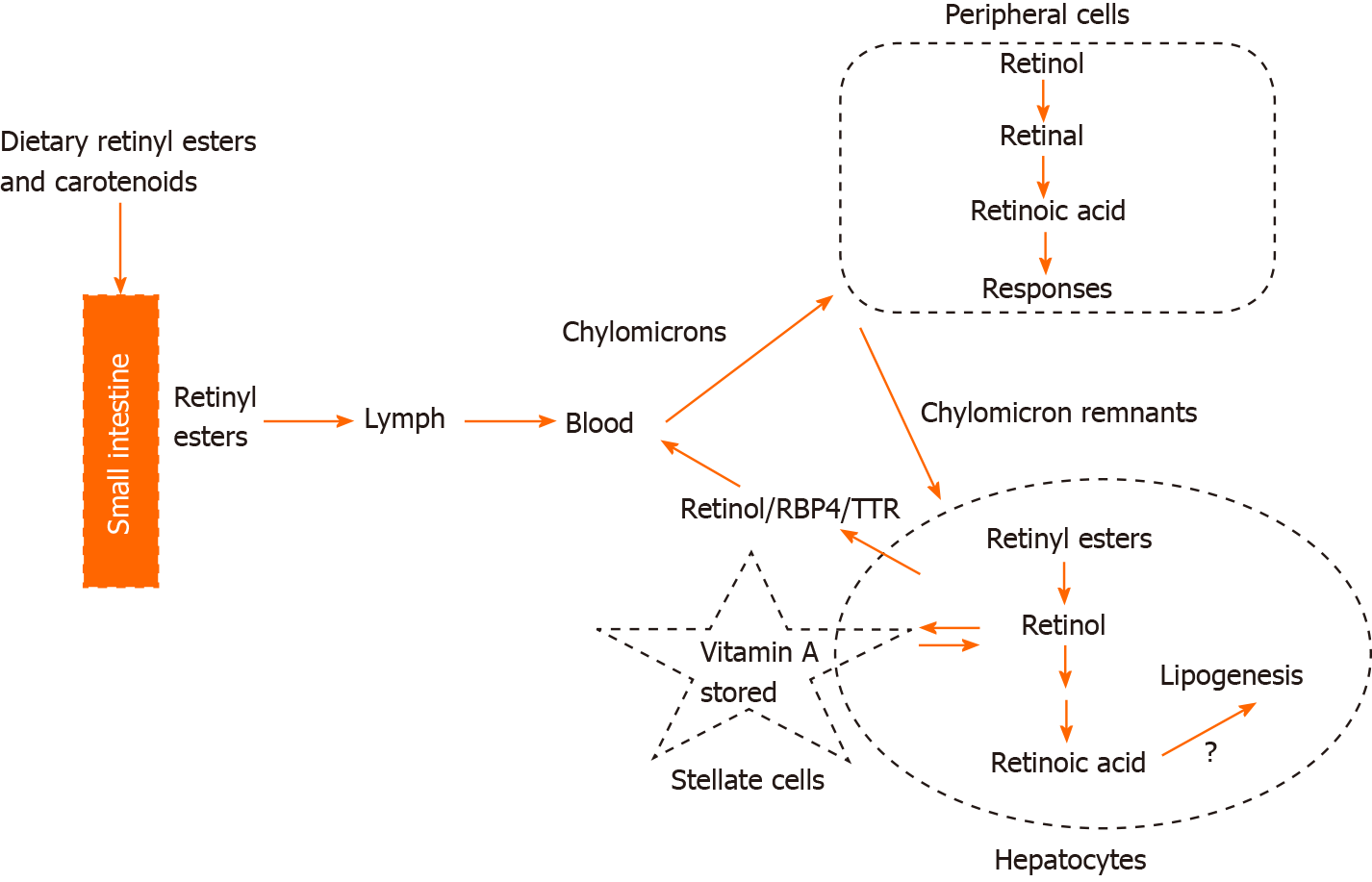Copyright
©The Author(s) 2021.
World J Clin Cases. Jun 26, 2021; 9(18): 4506-4519
Published online Jun 26, 2021. doi: 10.12998/wjcc.v9.i18.4506
Published online Jun 26, 2021. doi: 10.12998/wjcc.v9.i18.4506
Figure 2 Overview of vitamin A metabolism in the body.
Vitamin A (retinol) is in the forms of preformed vitamin A, retinyl esters, and provitamin A, carotenoids, in our diets. After digestion and absorption, resynthesized retinyl esters are packed as chylomicrons and released into the lymph circulation and then blood circulation to be delivered to the peripheral tissues first. The chylomicron remnants are taken up by the hepatocytes, which will hydrolyze retinyl esters to retinol, which is used for the productions of retinoic acid, stored again in the form of retinyl ester in stellate cells, or a complex containing retinol, retinol binding protein, and transthyretin, which is released into the blood circulation again. Retinol in the circulation is taken up by cells and oxidized into retinal, and then retinoic acid, which participates into the regulation of gene expression, and in turn cellular responses.
- Citation: Yang FC, Xu F, Wang TN, Chen GX. Roles of vitamin A in the regulation of fatty acid synthesis. World J Clin Cases 2021; 9(18): 4506-4519
- URL: https://www.wjgnet.com/2307-8960/full/v9/i18/4506.htm
- DOI: https://dx.doi.org/10.12998/wjcc.v9.i18.4506









